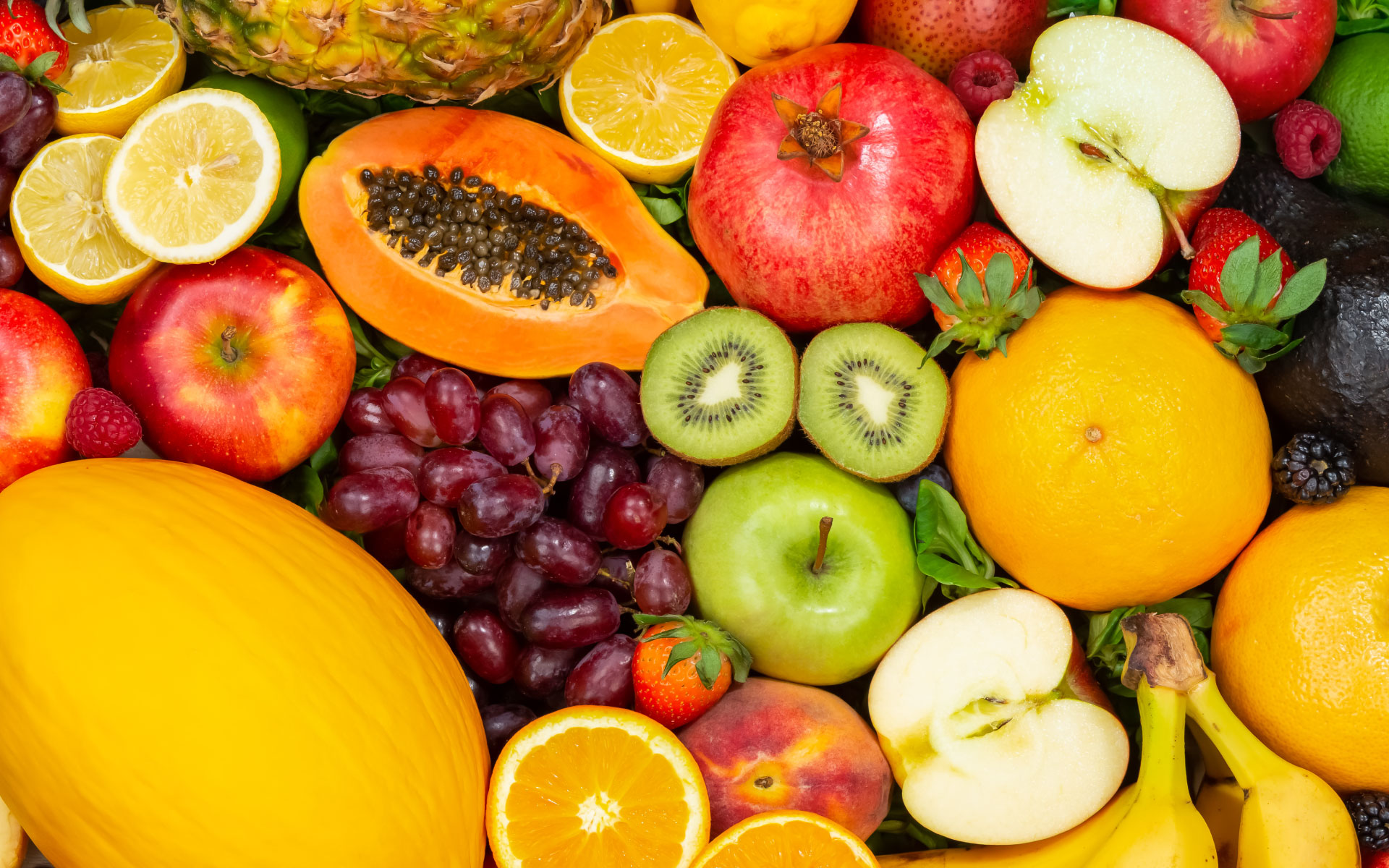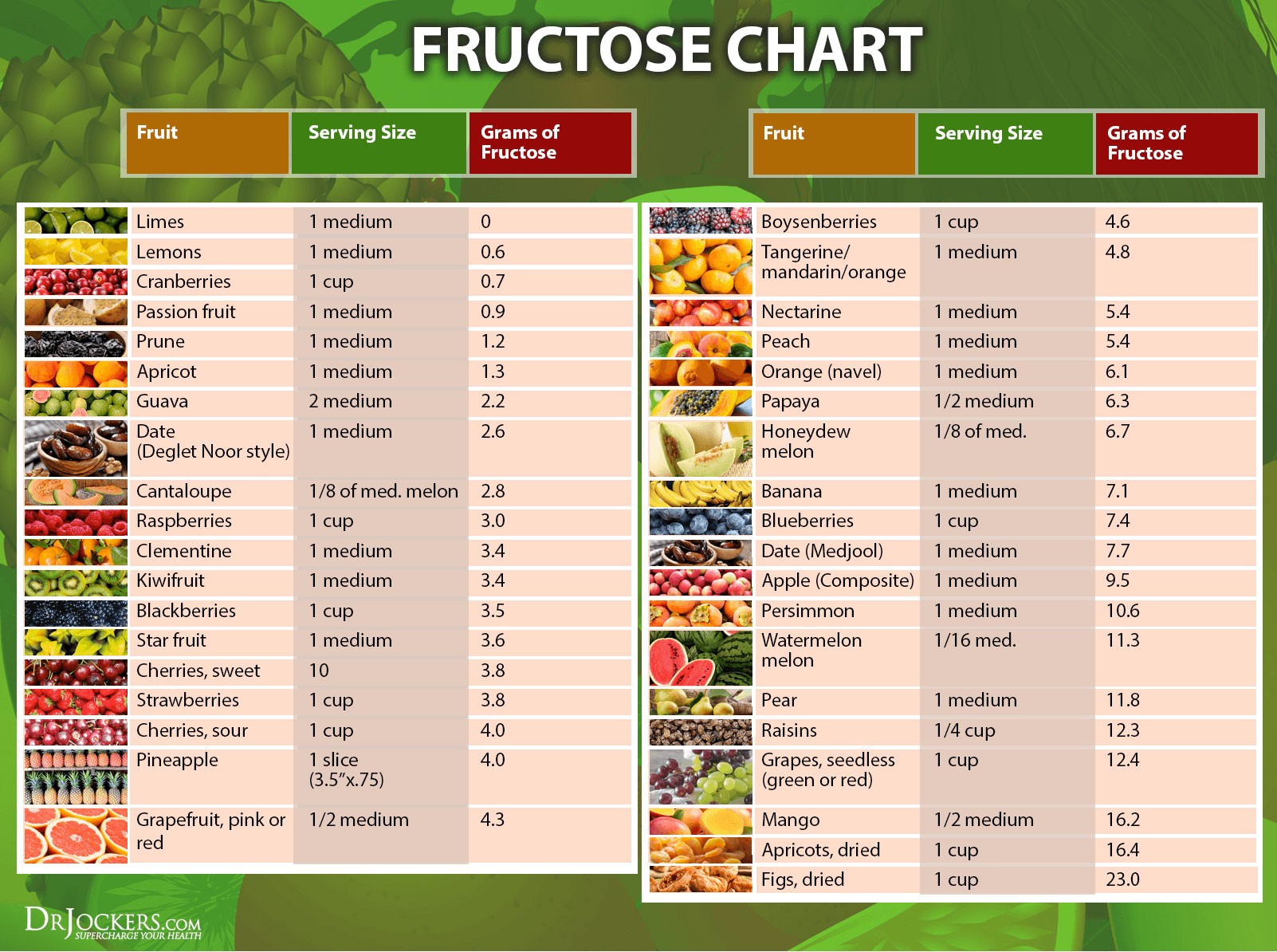I often get asked why I only suggest 2 pieces of fruit per day. This explanation will give you an understanding of the sugar in fruit, called FRUCTOSE.
Fructose is a monosaccharide, a simple sugar that your body cannot break down into smaller sugar molecules.
Fructose doesn’t go into the blood stream immediately like other sugars. Instead fructose goes insidiously to the liver for processing (like a toxin), creating lipid (fat) deposits in the liver and other body tissues. Pure fructose is about 70% sweeter than sugar. If a person consumes more fructose than the liver can handle, the organ gets overloaded.
Fructose is why drinking half a bottle of cloudy organic apple juice is as harmful as downing half a bottle of wine or cola. These drinks speed into the small intestine, then on to the liver. All fruit contains manageable amounts of fructose (unless you eat 2kg of grapes) and the fibre ensures it’s slowly released. However, note that whizzing fruit into a smoothie breaks down their structure. Prioritise EATING your fruit, rather than DRINKING IT.
Fructose can be granulated like table sugar. Or it can be in liquid syrup form such as agave nectar, coconut syrup, honey and high fructose corn syrup (HFCS). These are often added to so called “healthy foods” such as cereal bars.
The body can only metabolise small amounts of fructose per day: about 20 grams, or 4.5 teaspoons. As a guideline, go for an upper limit of 20 grams fructose (per day. However just one glass of fruit juice has 20 – 30 grams fructose, which is likely to take you over the daily limit of 20 grams!
Since fructose is metabolised in the liver, it can become a liver toxin. Over-consumption of fructose can cause the metabolism to slow down and convert sugars into high cholesterol fats.
- Fructose is metabolised in the liver, but excess consumption can cause fat buildup, leading to insulin resistance in the liver and non-alcoholic fatty liver disease.
- THE TAKEAWAY: Keep fructose consumption to a minimum and only from natural sources, like 2 pieces of whole fruit per day.
Sources of Fructose:
- Refined fructose, or High Fructose Corn Syrup, is found in many soft drinks, packaged and prepared foods, breakfast cereals, candy, fruit drinks, energy bars, donuts, and even gluten-free sweets.
- Natural fructose sources are fruit juices, raisins, dates, figs, prunes, grapes, mangos, papayas, apricots, pineapples and bananas. These are the super-sweet fruits to avoid eating. Apple and grape juice sweetened foods are high in fructose. Most people consider fruit juice healthy, however juices are extracted sweetness without the fiber, and they’re loaded with fructose. Fruit juices and soft drinks are are equally high in fructose. As a guideline, go for an upper limit of 20 grams fructose (4 teaspoons) per day. However just one glass of fruit juice has 20 – 30 grams fructose, which is over the daily limit of 20 grams!
Fructose in large quantities can cause big health problems. It increases the risk of hypertension (high blood pressure) and type 2 diabetes. It can raise total blood cholesterol levels, LDL “bad” cholesterol levels and triglyceride levels, especially in diabetics. It can cause fatigue, insulin resistance and obesity. It can cause fructose intolerance (DFI), a condition said to be found in nearly one third of the population, meaning they are unable to completely absorb fructose. This, in turn, can cause flatulence, intestinal cramps, bloating, abdominal pain, and diarrhea. Fructose may cause symptoms of irritable bowel syndrome (IBS) and can be an underlying cause of some types of IBS, due to poor absorption of fructose.
In simple words, fructose has a very high level of conversion to fat. When we eat fructose 30% of it is converted to fats! The fats created are low-density lipoproteins, VLDL’s, or the bad cholesterol fats.
The liver might take up a little glucose, but largely leaves it to travel through the bloodstream for the use of any cells requiring energy, from muscles to brain. Many carbs — bread, pasta, rice, potatoes — contain no fructose, only glucose in starch form.

